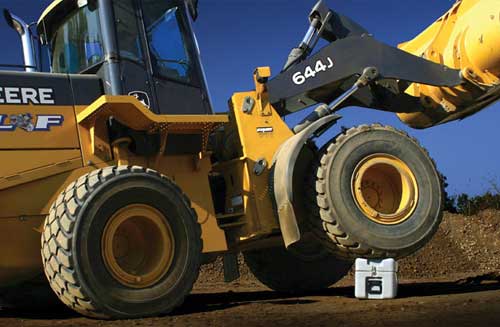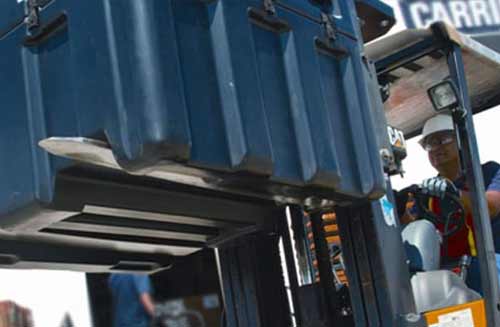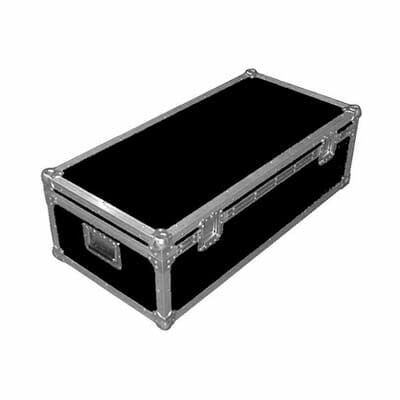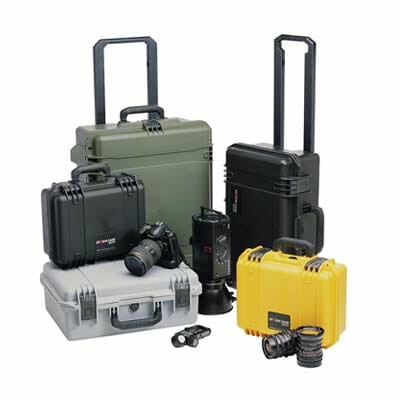Safe Shipping of Important Items
Ensuring any high value products are equipment are protected in transit / on site
How highly do you value your relationships with your customers?
The answer for every business should be the same. That without strong customer relationships, your business would at best struggle to grow, and at worst would cease trading all together.
Customer relationships not only lead to repeat business, are likely to see your customers spending more (as they trust you to deliver what they need) but over time will help with your brand and company perception too (plus word of mouth recommendations and referrals).
However, whilst your pricing, customer service and quality may all be where it needs to be, it is surprising how often companies let customers down through one simple thing.
Transit damage.
Supplying damaged products not only looks amateurish but is also costly (to you and your customer) and erodes trust and business potential.
And this is particularly acute if you are supplying high value, specialist, rare or critical products or equipment to your customers.
This is why you must get your shipping of high-value equipment, tools and parts absolutely spot on.
Quick Reference / Contents
08: Train staff
09: Work with trusted transport provider
10: Insurance
11: Summary
01: Types of Transit Damage
What types of transit damage could occur
Unfortunately, the amount of different ways your products or equipment could be damaged in transit is quite high.
For example, shock and impact can render a product or specialist tool unusable. So too can specific frequencies of vibration caused during transit (which can differ across all the items you ship).
Moisture or dust can affect any sensitive electronics and circuitry that your equipment relies on. And talking of electronics, static charges can often render important tools, highly calibrated devices and even specialist components unusable.
This is in addition to extremes of temperature, changes in atmospheric pressure, humidity and reactions to being contact with specific materials.
However, nearly of all this can be mitigated by utilising the correct packaging and protective cases.
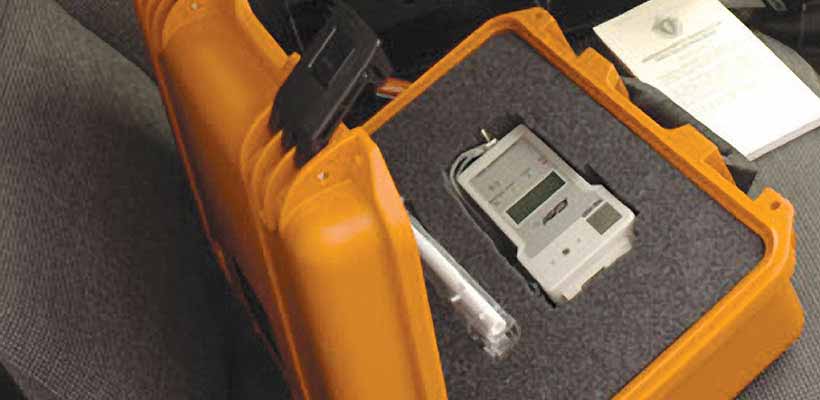
02: Shipping High Value Items
7 tips for safe shipping of high value items
So, in order to protect your high value items during transit (and indeed any fragile products or parts that simply cannot be damaged), there are a number of tips and strategies that should at least be considered.
These are as follows:
- Analyse use / environments
- Assess risks inherent to the item
- Choose the correct exterior packaging
- Use foam (correctly)
- Compatibility between packaging types
- Train staff
- Work with a trusted transport provider
- Make use of insurance
The rest of this guide provides further details on each of these considerations, including how it can impact your operations and business success.
03: Analyse Use / Environments
What are your products / cases likely to face?
Before specifying any protective shipping cases or transit packaging solution, the first stage is to always understand how and where the products or parts will travel.
For example, specialist components that are being transported to your customer who is merely a 20 mile lorry journey from your production facility, are likely to need less protection than those that will be shipped internationally via air or sea freight.
Similarly, if your products, parts or equipment will end up on location (e.g. test equipment, comms gear etc.) then you need to factor in the specific environmental conditions where the product will be used and stored, as well as how it gets there.
If possible, work out how many times the exterior packaging or transit case will be handled, how many different types of transport will be used, what the likely environmental conditions will be and how long the whole process will take (which could include multiple uses over a prolonged time period).
All of this should enable you to plan what type of protective packaging will be required to protect your specific items.
04: Potential Risks
Assess the potential risks to the product
However, the other key consideration at this stage is the product, component or equipment itself.
This again has major implications for the type of protection your items will need.
For example, any part or tool that contains electronics will likely need to be protected from both static and moisture. As such, a moulded waterproof case is likely to be the best option.
However, a part that is extremely sensitive to vibrations may not need such a robust form of outer packaging but will require custom engineered foam that addresses this specific point.
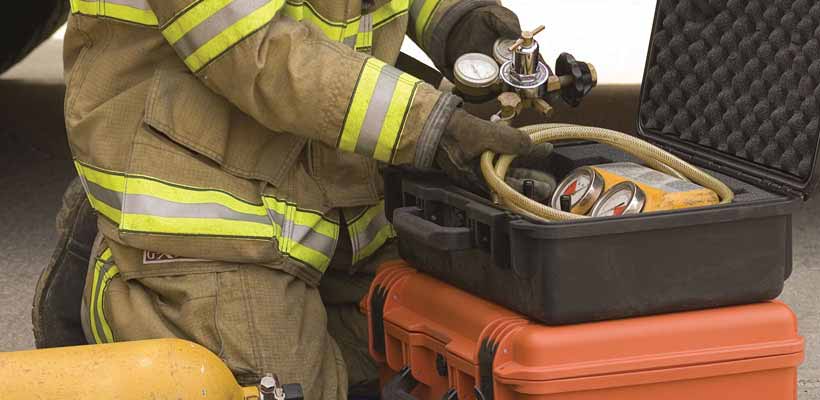
Finally, the type of product or part you are manufacturing is also likely to affect the volumes you are sending. It would not, for example, be sensible to ship high value and volume items (e.g. LED TVs) using plastic cases, as the cost would be prohibitive (hence corrugated boxes and foam are used).
However, for low volume and high-value items (i.e. those that are much rarer and difficult to replace), a fully engineered protective case is likely to be appropriate.
05: Selecting Your Case
Choose the correct exterior case / packaging
As alluded to in the points above, the exterior case or packaging that you choose can have a significant impact on the protection you provide your items.
A basic example is that products which are sensitive to moisture and dust (and will likely be taken out on site) should not be transported using corrugated cardboard.
However, other factors will come into play.
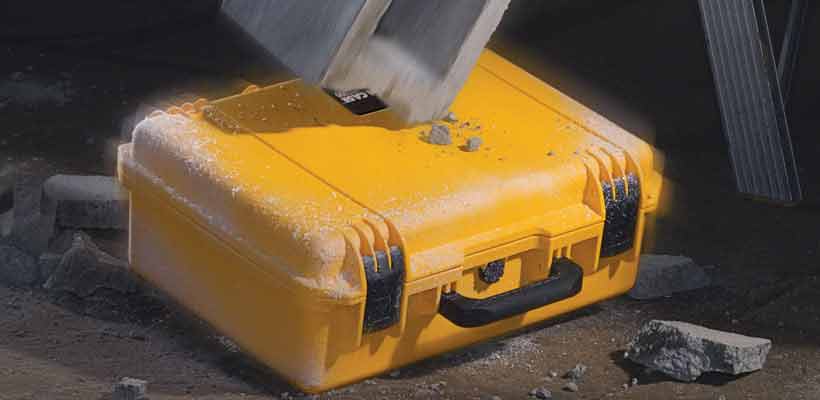
If items are being shipped long distances or internationally, then the weight of the outer packaging can have a significant impact on your costs. This may see you select an aluminium case instead of a moulded plastic one to keep the weight down.
Saying that the protective case market is extremely crowded.
Looking at waterproof cases alone, there at least 10 different brands all claiming to offer the best performance and most cost effective solutions for a range of varying applications.
When you factor in aluminium cases, presentation cases and even custom built flight cases, the amount of choice when deciding on transit cases can be somewhat bewildering.
Any specialist in supplying high value transit cases and packaging should have no problem in advising the best solution for your specific requirements however.
06: Use Foam (correctly)
Enhanced cushioning protection regardless of application
One of the most effective ways to protect high value and / or fragile items in transit is through the use of foam inserts.
As detailed previously, if you are shipping high value, fragile or highly calibrated items, you are at particular risk of suffering problems with damage in transit.
This damage can occur through excessive vibration or even simple acts mishandling, such as being dropped. On top of the cost of replacing the items often running into thousands of pounds, this can also lead to expensive and time-consuming customer complaints requiring urgent action to rectify.
However, it is actually possible to calculate and predict the exact performance offered by specific foams and tailor this to your specific requirements.
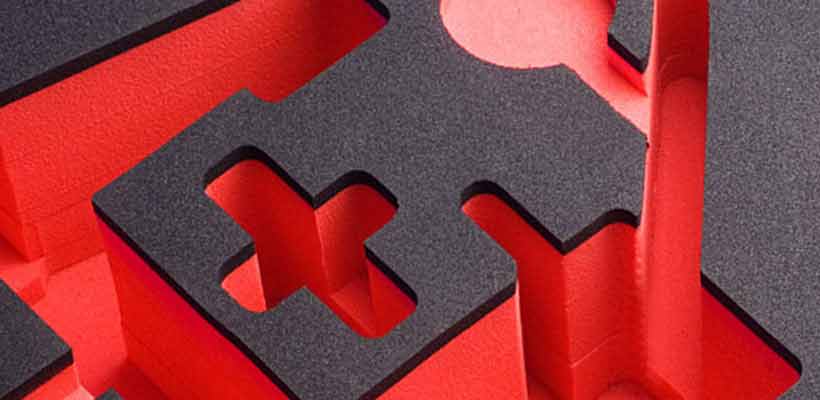
Different foams, grades and densities exhibit their own characteristics, and their “cushioning curves” predict the level of peak G-Force (shock) transmitted through each density of foam at a given thickness against a range of drop heights and static loads. It is even possible to take into account fatigue from repeated impacts.
Ultimately, it enables the manufacture of foam inserts which not only locate and present your products well but also provide precisely calculated levels of cushioning protection.
This can reduce the transmitted shock generated by mishandling of the protective case to such a degree that it will prevent damage to the packaged article by allowing a highly controlled level of deceleration within the foam insert.
In effect, it will offer the exact level of protection your items need for the duration of their expected transportation, use and ongoing storage.
07: Compatibility Between Packaging Types
Ensuring all packaging is compatible / efficient
Outer packaging and / or protective cases with poorly fitting or manufactured foam inserts can cause as many problems as they solve.
The primary requirement for any protective foam inserts is to allow for a controlled deceleration of the item within through absorption of force through the foam. However, if the foam itself is able to move – even slightly – within the equipment case, any calculations will be inaccurate and the levels of protection compromised.
In turn, this can lead to increased damages transit, plus the associated costs that this will incur.
As such, it is important to ensure compatibility between all elements of your packaging. This can often be achieved simply through the manufacture of both case and foam inserts under one roof.
By carefully matching a case’s characteristics with foam inserts that not only fit the case precisely but also have the optimum levels of protection engineered into them, you can be certain that the finished solution will be perfectly tailored to your specific product or application.
08: Train Staff
Ensure staff know how to pack / handle / use cases
It is surprising how often the cause of damage can be your own staff.
This could occur during the initial packing process, either through rough or careless handling (if an item is fragile) or through the items not being packed correctly or consistently.
Your packaging can actually make a difference here, as it is possible to engineer solutions that ensure items are packed in the correct order, in the correct compartments, and are then sealed correctly too.

However, if you are sending equipment to field staff, or customers using your products on location (for example specialist equipment hire), then education on how to handle not only the product but also the packaging or protective case that it comes in can also be of great benefit.
Many people may not realise that simply throwing the case into the back of their vehicle at the end of the job is not the best way to handle the expensive kit they are using, or that by not re-packing it correctly can lead to damage during the return journey.
Also understanding reasons why items may be mishandled (e.g. they are pressed for time, the items are too heavy to easily lift etc.) may also reveal ways in which processes – and instances of damage – can be improved.
09: Transport Providers
Work with trusted transport provider
As a lot of the damage experienced by high-value equipment or products occurs when in the hands of your logistics providers, it is absolutely crucial that you work alongside a trusted transport provider.
Many logistics companies will offer specialist services and their own insurance, so it is important to analyse the specific services they are offering and pick the one that is most appropriate for your products.
It may also be worth investigating the cost of setting up your own logistics in-house. Whilst potentially costly, this does give you control over the processes followed which can if managed correctly, help to reduce instances of mishandling, lost items and even late deliveries.
And if you already manage your own logistics in-house, thorough analysis and review can potentially highlight areas of concern which can be rectified as required.

10: Insurance
Plan for the worst case scenario
Unfortunately, no matter the precautions taken it is highly likely that a very small percentage of shipped items will become damaged during transit.
Whilst this may not necessarily be a problem for lower value items, if the products you are shipping are bespoke to the customer, extremely high in value, or especially rare, this can cause a major headache.
As a backup, it is always wise to insure any products or equipment of this nature.
Whilst it may not prevent time wasted on site by your field engineers, and may still lead to strained relationships with your customers, it will at least mitigate the financial losses that you could incur through the need to manufacture or source replacements.
So as with all insurance, whilst it may simply seem like another cost to bear, it can prove invaluable depending on the type of equipment or products you are shipping.
In Summary
Tips for shipping high value items
If your products and equipment are particularly high in value, then even a very small reduction in the percentage becoming damaged can have a significant impact on your companies operating costs and ultimately profits.
And whilst choosing the correct protective case and foam (or indeed the most appropriate form of packaging) can make a large contribution to doing this, it is important to take a holistic view of your entire packing, transit and handling processes.
Further Reading...
About the Author

Having originally joined GWP Protective back in 2004, working on the factory floor, Richard now heads up the business as General Manager. [Read full bio…]
Featured Products
View the cases in this guide...
Get in Touch...
We're here to help!
Related Guides
All Guides & Advice
Free PDF Download

15 Crucial Considerations for Protecting Your Items
Get your free guide on the 15 points affecting protection of high value products or equipment.

01793 754 444
Mon – Fri 08.00 – 17.00

info@gwp.co.uk
Email a packaging expert

























